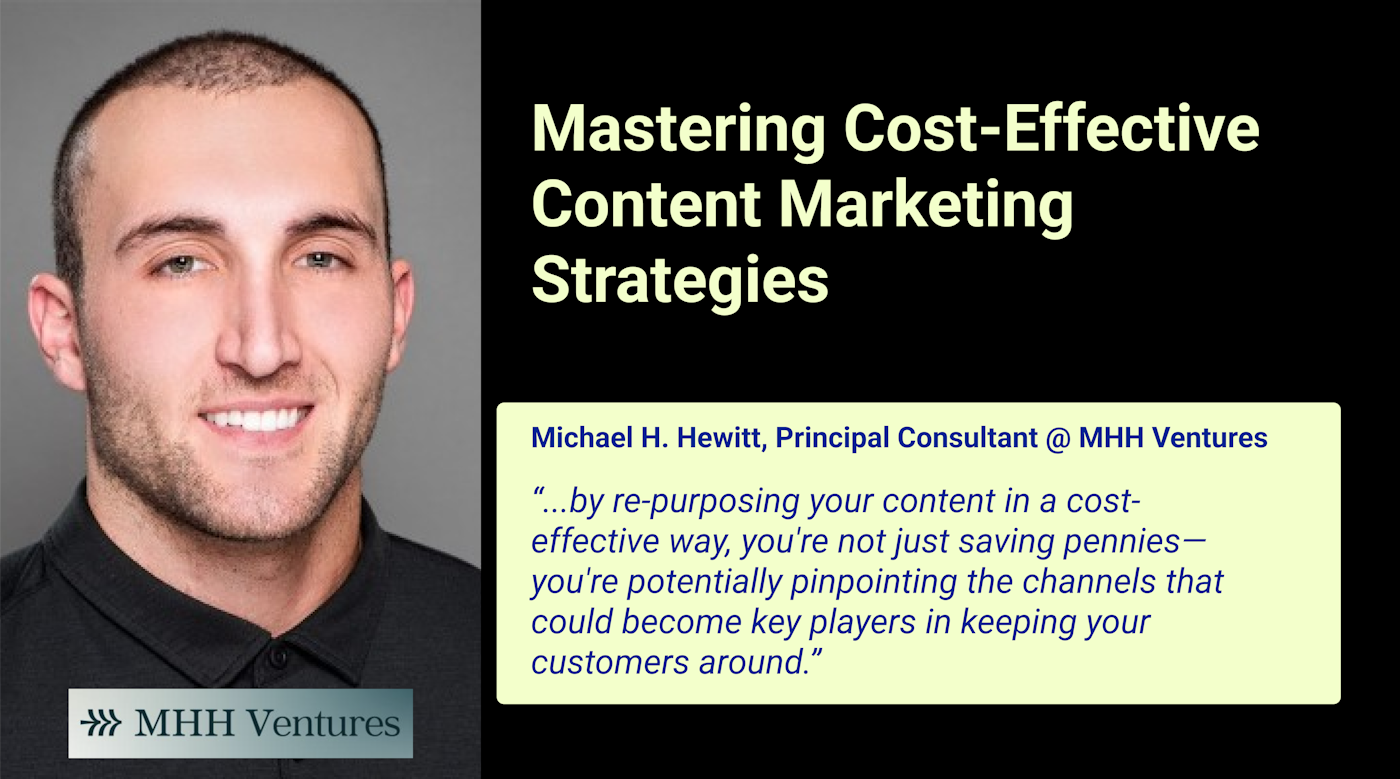7 Ways to Optimize Your Content for Maximum Conversion
Conversion optimization is the strategic art of increasing the percentage of your website visitors who complete a desired action. With website conversion rates averaging around a meager 2 percent, it's evident that there is a vast scope for improvement. This article unravels the secret to content optimization for enhanced conversion rates, offering practical solutions to the common plight of low conversion rates.
The Importance of Conversion Optimization
At its core, conversion optimization in content marketing is a customer-oriented strategy. It's all about understanding your audience's needs and desires and providing them with valuable content that prompts them to take action. The impact of low conversion rates on businesses is far from trivial, as it directly affects the return on investment (ROI) on your marketing efforts. Businesses that ignore this crucial aspect risk losing potential customers to their competitors who have aced the game of conversion optimization.
1. Understanding Your Audience
Before you start creating content, it's vital to understand who your audience is and what they need. Richard McBeath, CEO of Captain, emphasizes that brands often produce content to educate and convert. The goal is not just to disseminate information but to guide the audience towards realizing that your product or service is the solution they need. To do this effectively, you must deeply understand your audience's pain points, interests, and preferences.
Start by creating detailed buyer personas that represent your ideal customers. Then, use tools like customer surveys, social media listening, and web analytics to learn more about your audience's behavior and preferences. This data-driven approach will allow you to create content that resonates with your audience and guides them towards conversion.
2. Crafting Compelling Headlines
Your content's headline is the first thing your audience sees, and it can make or break their decision to engage with your content. Statistics reveal that on average, 8 out of 10 people will read headline copy, but only 2 out of 10 will read the rest. This underscores the importance of investing time and creativity in crafting compelling headlines.
A great headline should be clear, concise, and intriguing. It should provide a snapshot of what your content offers while also piquing the reader's curiosity. Consider incorporating your main keyword to improve SEO, and use action words to convey a sense of urgency or excitement. Remember, your headline is a promise to your readers - make sure your content delivers on that promise.

3. Creating Engaging and Relevant Content
Engaging, relevant content is the cornerstone of successful content marketing. One of the key trends for 2024 is empathy and human-focused content, which speaks to the need for content that resonates on a personal level with the audience.
Creating this type of content involves more than just providing information. It's about telling a story that your audience can relate to, addressing their pain points, and offering actionable solutions. Use a conversational tone to make your content more relatable and easy to understand. Remember, your goal is to educate your audience and guide them towards conversion - your content should provide value and drive action.
4. Using the Hub & Spoke Content Strategy
The Hub & Spoke Content Strategy is a recommended best practice for content marketing in 2024. This strategy involves creating a comprehensive, in-depth piece of content (the "hub") and several related, smaller pieces of content (the "spokes") that link back to the hub.
The hub should be a high-value piece of content that thoroughly covers a topic relevant to your audience. The spokes, on the other hand, should delve into specific aspects of the main topic, providing additional information and context. This strategy not only improves SEO but also enhances user experience by providing a wealth of interconnected, valuable content.
5. Implementing Effective Call-to-Actions (CTAs)
The power of a well-crafted call-to-action (CTA) cannot be overstated. CTAs are what bridge the gap between the interest generated by your content and the desired action you want your audience to take. Over 92% of all optimization experiments target CTA clicks among other metrics, indicative of the pivotal role CTAs play in driving conversion.
Crafting effective CTAs starts with clear, action-oriented language that tells your audience exactly what they should do next. Be specific and direct, using words like “download”, “subscribe”, or “buy” that indicate a clear action. Pair this with a compelling value proposition that highlights the benefit of taking the action. Remember, your objective is to facilitate a natural, seamless transition from interest to action.
6. Utilizing Personalization and Trust Signals
Personalization and trust signals have emerged as powerful tools in content optimization. Personalized content can reduce acquisition costs by as much as 50%, and lift revenues by up to 15%. It's all about making your audience feel like the content is tailored specifically for them. You can achieve this by using your audience's data to customize your content, offers, and recommendations.
Trust signals, on the other hand, are elements that boost your brand's credibility. Including customer testimonials, case studies, and social proof can significantly increase your conversion rates. In fact, personalized experiments drive 41% more impact. This approach reassures your audience of the value and reliability of your product or service, nudging them closer to conversion.
7. Testing and Optimization
The journey to optimized content doesn't end after you've published your content. Continuous testing and optimization are crucial to achieving maximum conversion. For example, the average conversion rate for all pop-ups is 3.09%, with the top 10 percent averaging a 9.28% conversion rate. These figures highlight the potential of rigorous testing and optimization in driving up your conversion rates.
Start with A/B testing different elements of your content, such as headlines, images, CTAs, and layout. Monitor your analytics to understand how your audience is interacting with your content and where there might be room for improvement. Use these insights to refine and optimize your content continuously.

Final Thoughts
Achieving maximum conversion requires a strategic, data-driven approach to content creation and optimization. From understanding your audience to crafting compelling headlines, creating engaging content, implementing the Hub & Spoke Content Strategy, focusing on effective CTAs, personalizing content, and testing and optimization, each step plays a vital role in driving conversion.
By implementing these strategies, businesses can transform their content into a powerful tool for conversion, ultimately boosting their ROI and establishing a stronger connection with their audience. Remember, optimization is an ongoing process. Keep testing, refining, and improving your content to stay ahead in the game of content marketing.




